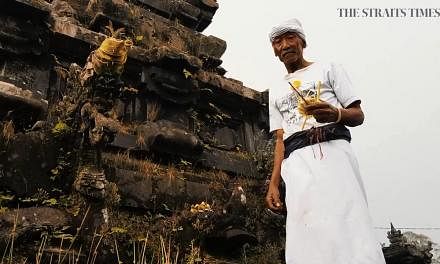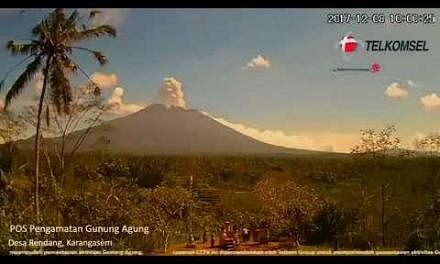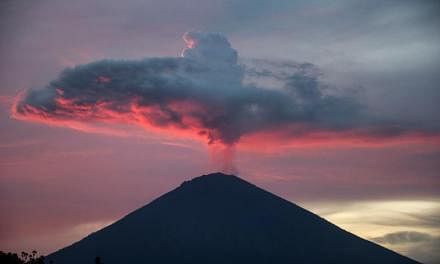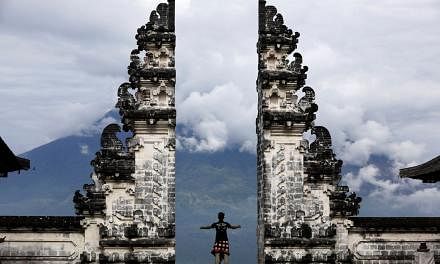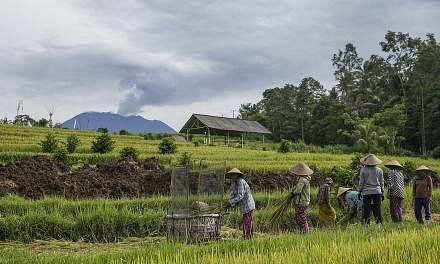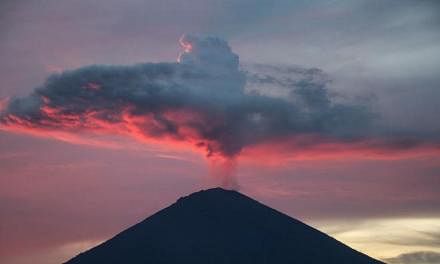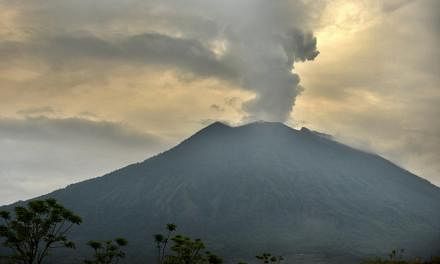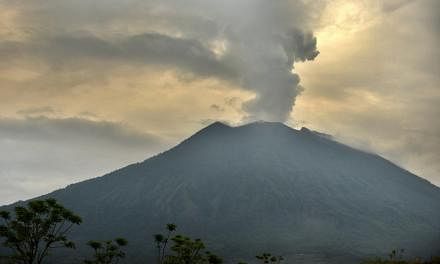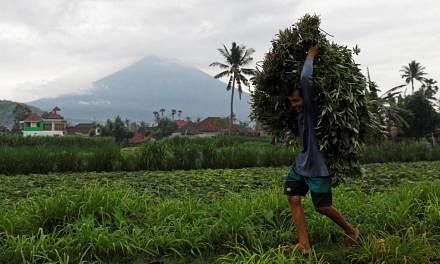JAKARTA (THE JAKARTA POST/ASIA NEWS NETWORK) - While Mount Agung in Bali has shown a decline in volcanic activity, residents of nearby areas are told to remain vigilant in the face of more potential eruptions.
The Volcanology and Geological Hazards Mitigation Centre (PVMBG) has reminded villagers to stay on high alert despite Mount Agung's calming appearance, as the agency continues to detect a high level of activity inside the volcano.
For the past three days, visitors and residents of Bali's Karangasem regency have found relief in witnessing the smoke coming out of Mount Agung turning into a thin, white haze. Sometimes, there is nothing but clouds drifting above the volcano.
The sight is a stark contrast to the image Mount Agung presented for about five days from Nov 25, during which thick plumes of dark smoke - at times mixed with red - billowed out of the crater, while volcanic ash spewed as high as 4,000m into the sky.
"Thank God, Mount Agung is without smoke this afternoon," Denpasar resident Grace Jeanie, wrote on her Facebook page on Saturday.
Photos of a serene looking Mount Agung surrounded by a clear, blue sky began surfacing on various social media platforms over the weekend.
Lombok International Airport began operating as normal on Sunday, after closing twice in the past week due to Mount Agung's rumblings.
However, airport officials said they would continue to observe and record the volcano's activity every six hours to ensure the safety of their flights and passengers.
"We have operated normally for two days, since Saturday. The airport is still taking some steps to anticipate (potential) volcanic activity," said Lombok International Airport general manager I Gusti Ngurah Ardita on Sunday.
Meanwhile, the PVMBG has warned residents and visitors not to be deceived by Mount Agung's seemingly subdued appearance.
"It's calm on the outside, but there's a lot of activity inside," PVMBG official Devy Kamil Syahbana said on Sunday.
He added that the centre continued to detect overscale seismic tremors, which exceed the ability of PVMBG's tools to measure.
"The tremors are the result of ongoing gas and ash eruptions in the crater," said Devy. "Low frequency earthquakes have also taken place, caused by the movement of magmatic fluids as they rise and breach the surface."
At least 20 million cubic metres of magmatic fluids might have filled the crater, he said.
Mount Agung's activity began to escalate in September with a series of earthquakes. It first erupted on Nov 21, spewing volcanic ash and gas. On Nov 28, ash columns reached as high as 4,000m into the sky, before dropping to 2,000m the next day.
The PVMBG also detected the presence of lava flowing inside the crater, evidence of which appeared as fiery red smoke or glowing crimson lines on top of the volcano at night.
Volcanic mud flows, known as lahar, have also emerged since the eruption began. Though no fatalities have been recorded, the lahar has damaged houses, roads and agricultural areas.
The PVMBG has warned people to stay away from the exclusion zone, or an 8 to 10km radius from the crater.
At least 22 villages located on the slopes of Mount Agung were declared exclusion zones. Still, hundreds of residents have insisted on staying in their homes.
I Gede Pawana, chairman of Pasebaya, a community comprising the leaders of 28 villages dedicated to Mount Agung mitigation activities, said most people refusing to evacuate lived within a 10km radius from the crater.
"Most have moved their belongings to temporary shelters. However, they chose to stay in their homes because they think they will still have time to flee if an eruption occurs," Pawana said.
As Mount Agung was still very active, Devy added, a major eruption could happen at any time, particularly when the volcanic pipes get clogged up.
"It's possible for magma pushing to the surface to get blocked by lava in the crater that has become cold and solid," he said.
If this occurred, Devy said, the resulting eruption would be larger because of the accumulation of magma pressure.


